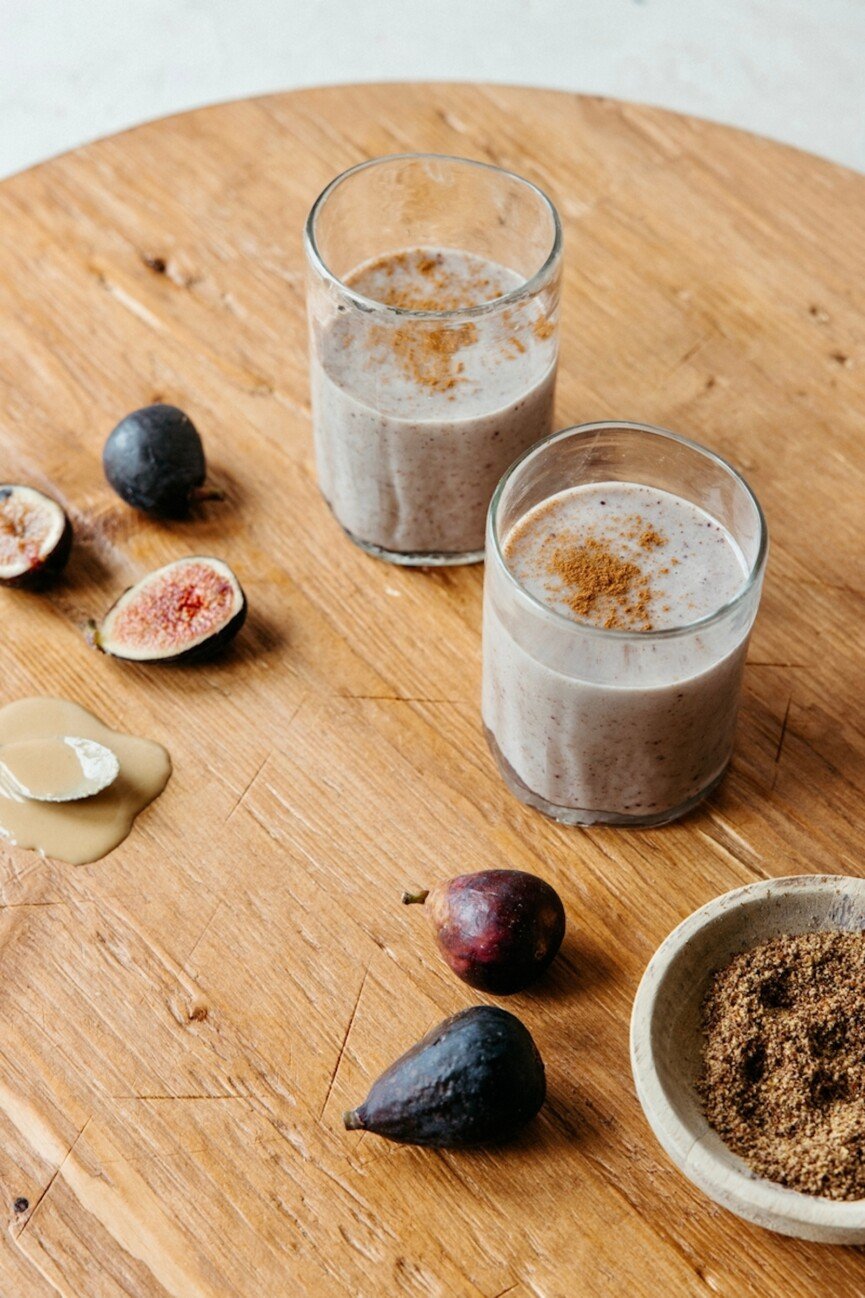Build Muscle, Lose Fat—A Realistic Guide to a Stronger, Leaner Body
Focus on these 5 things. The post Build Muscle, Lose Fat—A Realistic Guide to a Stronger, Leaner Body appeared first on Camille Styles.

With a very full heart (and equally full hands) I recently became a mother of two. As such, I’ve leaped back into the spotlight of mood swings, pelvic floor dysfunction, and sleepless nights. But there’s one postpartum experience I completely forgot about: muscle loss. Days after delivering both of my boys, it was as if poof most of my muscle mass disappeared—despite active pregnancies. With strength goals on the horizon, it’s a fitting time to share how to build muscle and lose fat. After all, many of us are on a quest for a fitter, stronger body (postpartum aside!).
But how can you shed unwanted pounds without drastic measures? Fortunately, we’re taking a practical approach. Welcome to a realm where wellness meets realism—a guide to achieving your fitness goals, sans restrictive diets or extreme workout routines.

Don’t be Shy About Your Physique Goals
We love a woman on a mission. With that in mind, own your physique goals with confidence! Inevitably, being timid about your aspirations (provided they’re accompanied with healthy intentions) will only delay your achievements. This is your open invitation to share your goals—whether quietly with friends or via a megaphone on social media. In turn, you’ll feel empowered, motivated, and accountable. Plus, you’ll inspire others through your transparency. And this is the kind of ripple effect that does double-duty: breaks down stigmas surrounding body image and fitness.

Getting Back to the Basics
In an era saturated with fad diets and quick-fix workout regimes, the pursuit of sustainable weight loss (and building muscle) can feel contradictory. But good news! Striking a balance between shedding unwanted pounds and sculpting lean muscle doesn’t involve hours on the elliptical. In fact, that might do more harm than good. Ultimately, by understanding the fundamentals of muscle growth and fat loss—as well as implementing evidence-based strategies—anyone can embark on a journey toward a stronger, leaner body.
Why is building muscle important?
Spoiler alert: muscle does more than just tone your physique. It plays a vital role in supporting overall health and longevity. For example, increased muscle mass contributes to a higher metabolic rate (you burn more calories at rest!), supporting weight maintenance, healthy blood sugar levels, and a lower risk of obesity-related diseases. Additionally, building muscle improves bone density and promotes better posture. And this reduces the likelihood of injury and enhances your quality of life. Last but not least, preserving muscle mass is crucial as we age. After all, it helps mitigate age-related muscle loss—known as sarcopenia—and maintain vitality in our later years.

How long does it take to build muscle?
This depends on several factors: genetics, training intensity, nutrition, and consistency. If you’re not doing any resistance training, you’ll likely notice significant gains within a few weeks. This is due to stimulus to your muscles and initial increases in muscle glycogen stores (how we store carbs). That said, substantial muscle growth takes time. Think months to years of dedicated training. The average person gains approximately 0.5-1 pound of muscle per week during the initial stages of training, with progress gradually tapering off.

The Best Ways to Build Muscle
Building muscle doesn’t happen overnight. It’s a gradual process. But with a well-designed training program, the right nutrition, and plenty of persistence, you’ll achieve optimal muscle growth. In other words, a change in your physique necessitates a synergistic approach.
Resistance Training
Any form of resistance training, which involves lifting weights or bodyweight exercises, is the cornerstone of muscle development. Focus on compound exercises, like squats, deadlifts, bench presses, and rows. These engage multiple muscle groups for maximum stimulation. Additionally, progressive overload is key. Gradually increase the weight, reps, or sets over time to continually challenge your muscles and spur growth.
Consider working with a physical trainer for specific instructions and guidance.
Proper Nutrition
In addition to exercise, proper nutrition is fundamental. It plays a pivotal role in supporting muscle growth and recovery. Before and after your workouts, make sure to eat enough high-quality protein. For most, that looks like 0.8-1 gram per pound of body weight per day. This optimizes muscle protein synthesis. Additionally, prioritize complex carbohydrates. These fuel workouts and replenish glycogen stores.

How do you know if you need to lose body fat?
With building muscle in the rearview mirror, let’s switch gears to fat loss. While I am anti-diet culture, I’m not anti-fat loss. These two things can co-exist. Under certain circumstances, shedding visceral body fat (the type stored in the abdominal cavity around important organs), might be an important and vital goal. With that in mind, it’s important to know whether or not losing body fat makes sense. Here are several indicators to keep in mind:
1. Body mass index (BMI). While not a perfect measure, BMI provides a general indication of whether your weight falls within a healthy range based on your height. A BMI calculation above 25 is considered overweight, and a BMI above 30 indicates obesity. Note that BMI doesn’t account for muscle mass, so it may not accurately reflect body composition for those with higher muscle mass.
2. Body comp analysis. For a more accurate assessment of body fat percentage, consider a dual-energy X-ray absorptiometry (DEXA) scan, bioelectrical impedance analysis (BIA), or skinfold caliper measurements. These methods provide insight into the proportion of lean muscle mass versus body fat.
3. Waist circumference. Unfortunately, excess fat around the waist is particularly harmful. It increases the risk of chronic diseases (type 2 diabetes, heart disease, etc.). Men with a waist circumference greater than 40 inches and women with a waist circumference greater than 35 inches may have an increased risk of health problems.
4. Health markers. Have your doctor evaluate key health markers—blood pressure, blood glucose levels, cholesterol levels, and triglycerides. Elevated levels may indicate the need for fat loss.
5. Physical fitness. Excess body fat impairs everything from physical performance to stamina and flexibility. If you find it challenging to engage in physical activities, fat loss could be the missing link.
6. Personal goals. Whether you aim to improve athletic performance, enhance physical appearance, or reduce the risk of chronic diseases, losing body fat may align with your goals and intentions.

How to Lose Fat in a Healthy and Sustainable Way
Along with building muscle, losing excess body fat is often a parallel objective. But as mentioned, it’s important to approach fat loss in a manner that prioritizes health and sustainability over rapid results (or extreme measures). Below are a few ways to get started.
Evaluate your eating habits
Begin by evaluating your current eating habits. Identify areas where you can make more nourishing choices (like having a savory vs. sweet breakfast or swapping excess sugar for a bowl of berries). Focus on consuming whole, nutrient-dense foods—particularly protein—which provides satiety and muscle growth.
Aim for more steady-state movement
In addition to dietary changes, incorporating regular physical activity is essential. Engage in a combination of cardiovascular exercise and strength training. Aim for at least 150 minutes of moderate-intensity (walking, swimming, etc.) or 75 minutes of vigorous-intensity aerobic activity per week. Couple that with at least two days of full-body strength training.
Be patient
Remember, sustainable progress takes time! Be patient and consistent with your efforts. Slow and steady wins the race. Of course, don’t forget to prioritize adequate sleep, hydration, and stress management. All of these impact your ability to achieve and sustain fat loss.
Should you focus on fat loss during a specific phase of your menstrual cycle?
Not necessarily. Even if you cycle sync, there isn’t a set time during the menstrual cycle that’s universally recommended for weight loss and muscle gain. That said, you may find it beneficial to focus on strength training and muscle building during the first half of your cycle (follicular phase). During this phase, energy levels tend to be higher.
On the other hand, during the second half of the cycle (luteal phase)—when progesterone dominates—you may want to focus on lighter or maintenance workouts and prioritize nutrition. When in doubt, listen to your body and adjust your fitness and nutrition approach accordingly!

5 Tips to Gain Muscle and Lose Body Fat
To bring this full circle, losing visceral fat—while preserving muscle mass—is a multifaceted approach that combines targeted dietary modifications, exercise strategies, and lifestyle interventions. Here are several evidence-based strategies to help you reduce visceral fat without sacrificing muscle:
1. Prioritize strength training. Incorporate resistance training into your exercise routine to build and maintain lean muscle mass. Aim for 2-3 strength training sessions per week, progressively increasing the intensity and resistance over time.
2. Incorporate high-intensity interval training (HIIT). HIIT workouts involve alternating between periods of high-intensity exercise and short recovery periods. HIIT effectively reduces visceral fat while preserving muscle mass and improving cardiovascular fitness. Include HIIT sessions 2-3 times per week.
3. Focus on a protein-rich diet. Consume adequate protein to support muscle repair while promoting fat loss. Include lean protein sources (chicken, turkey, fish, eggs, tofu, tempeh, legumes, etc.) in your daily meals.
4. Emphasize whole foods. Choose nutrient-dense, whole foods over processed and refined sugars and carbs. Opt for a balanced diet and fiber-rich ingredients to promote satiety and regulate blood sugar levels.
5. Get sufficient rest. Aim for 7-9 hours of quality sleep per night. This encourages optimal metabolic function, hormone regulation, and recovery. Inadequate sleep can disrupt appetite-regulating hormones, increase cravings for unhealthy foods, and impair fat loss efforts. When in doubt, establish a consistent sleep schedule!

 Koichiko
Koichiko 































